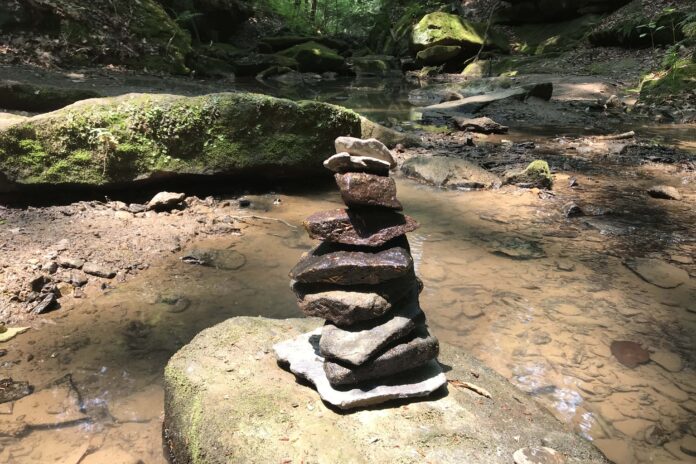
By Turner Provost
When I spend time outdoors, I like to see and experience nature for what it is. I think many of you would agree that when you spend time outdoors, you don’t like to see trash or graffiti.
Every time I am out fishing or kayaking, I make an attempt to pick up any trash I see. While I understand sometimes accidents happen and sometimes wrappers or water bottles blow away or get forgotten about, there are times I stumble upon dump sites or areas where it was obvious that trash was left on purpose. That is what really gets me aggravated, when stuff is left out in public lands or waters because of pure laziness or neglect.
Rock cairns
There is one type of vandalism that may seem harmless but can have negative effects on stream health. These are called rock cairns, and you have probably seen them before. They are little pyramids made by stacking flat rocks along the edges of creeks, rivers, lakes or even beaches.
The big issue with this is that these rocks provide prime habitat for macroinvertebrates like crayfish, mayflies, stoneflies and hellgrammites. Insects are the primary food source for small stream fishes, and if there is an absence of these bugs in the stream, then the fish will have to rely on other less optimal food sources.
These rocks also make a really good habitat for small sensitive stream fishes like darters, sculpins, and madtoms. Along with fish and aquatic insects, these rocks are also very important for salamanders to hide and lay their eggs under.
When these rocks are stacked out of the water, they are useless and offer no benefit to the habitat. Plus, they are an eyesore in many pristine streams.
When I am in a remote stream, it bothers me to end to look down and see evidence that someone was just there. And it is even unlawful in many national and state parks to make rock cairns because of the destruction of critical habitat. They encourage people who are recreating outside to knock them over and scatter the rocks back into the stream.
So please enjoy nature responsibly and leave no trace that you were there.
(Turner Provost is the Captina Watershed Coordinator at Belmont SWCD. He can be reached at captina.coordinator@gmail.com.)












